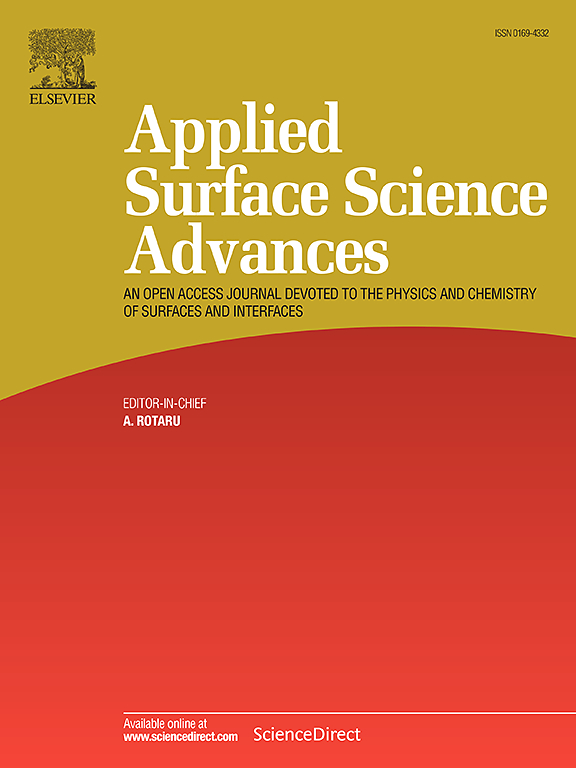The effect of copper additives on hybrid Zr-based chemical conversion coating morphology and chemical compositions
IF 7.5
Q1 CHEMISTRY, PHYSICAL
引用次数: 0
Abstract
In the realm of corrosion protection, Zr-based conversion coatings offer an environmentally friendly, chromate-free alternative to conventional coating. This study uses advanced X-ray, electron microscopy and electrochemical testing techniques to better understand the impact of varying Cu²⁺ ion concentrations on the characteristics of Zr-based coatings on Fe substrates. Our findings demonstrate that within the tested conditions, higher Cu²⁺ additive concentrations at 40 ppm enhance surface characteristics, increasing stability towards anti-corrosion capability, particularly under NaCl treatment. Conversely, at a lower Cu²⁺ concentration of 20 ppm, coatings exhibited more significant dissolution of Cu clusters and increased vulnerability to chloride-induced degradation. X-ray photoelectron spectroscopy and synchrotron X-ray fluorescence (XRF) and X-ray absorption near edge structure (XANES) spectroscopy analyses revealed Cu²⁺ formation in Cu20, while Cu40 retained its metallic state (Cu⁰) with a slower reaction rate. Cu20 offers some protection but lacks durability, whereas in Cu40, lower Icorr, and enhance corrosion resistance, making it ideal for protective coatings in salt-water environments. This study underscores the importance of balancing Cu²⁺ ions concentration in the coating solution to optimize performance, highlighting the role of Cu in enhancing both surface properties and long-term stability.

在防腐蚀领域,Zr 基转化涂层提供了一种不含铬酸盐的环保型传统涂层替代品。本研究采用先进的 X 射线、电子显微镜和电化学测试技术,以更好地了解不同 Cu²⁺ 离子浓度对铁基底上 Zr 基涂层特性的影响。我们的研究结果表明,在测试条件下,Cu²⁺添加剂浓度越高(40 ppm),表面特性越好,抗腐蚀能力稳定性越强,尤其是在氯化钠处理条件下。相反,在较低的 Cu²⁺ 浓度(20 ppm)下,涂层表现出更明显的铜簇溶解,更容易受到氯化物引起的降解的影响。X 射线光电子能谱和同步辐射 X 射线荧光 (XRF) 以及 X 射线吸收近边缘结构 (XANES) 光谱分析显示,Cu20 中形成了 Cu²⁺,而 Cu40 则保持了金属状态(Cu⁰),但反应速度较慢。Cu20 具有一定的保护作用,但缺乏耐久性,而 Cu40 的 Icorr 较低,耐腐蚀性较强,是盐水环境中理想的保护涂层。这项研究强调了平衡涂层溶液中 Cu²⁺ 离子浓度以优化性能的重要性,突出了 Cu 在增强表面性能和长期稳定性方面的作用。
本文章由计算机程序翻译,如有差异,请以英文原文为准。
求助全文
约1分钟内获得全文
求助全文

 求助内容:
求助内容: 应助结果提醒方式:
应助结果提醒方式:


